Join the Leading Global Eye Health Alliance.
Membership-
Choose an alternate language here
The two new provinces of Lam Dong and Dak Nong, where the project expanded the Community Eye Care model, were facing difficulties when the project started, but the project has since helped to set up and strengthen eye care services from provincial level to grassroots level.
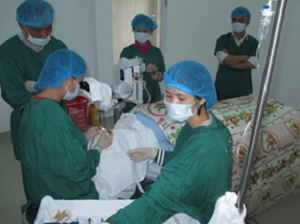
Previously, eye care services in both provinces were practically non-existent. Each province only had one eye doctor at SDPC, and most districts had no eye doctors nor nurses. There were few pieces of minor ophthalmic equipment at best. Each year, a different charity would arrive to conduct a few hundred cataract surgeries before leaving without following-up.
At the community level, local people had little opportunity to access eye care service. CHWs and VHWs were not trained in primary eye care and did not know where to send someone with an eye problem. With the mountainous terrain and agricultural-based economy centred on coffee and rubber, the local people live far from the urban centres and far from each other and would rarely have received any eye care education let alone screening or treatment.
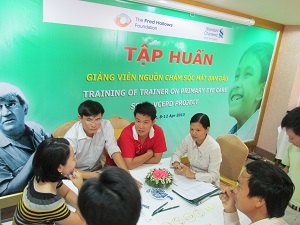
To overcome these barriers, the project focused on setting up an eye health care network, enhancing local people’s awareness of eye care and conducting screening campaigns at both community level and at eye units.
The first part was to set up and strengthen the eye health care network with various kinds of training provided for conducting cataract surgery and other eye treatments, eye health education skills so that staff could deliver basic eye care training to commune and village health workers. District level doctors and nurses were trained as previously there were few or none, and additionally, school health personnel were given training to screen their students which is now conducted annually for refractive error, with appropriate referrals where necessary.
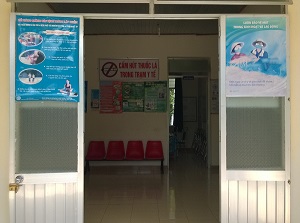
The second part of enhancing community awareness about eye health care is crucial. Several forms of communication suitable for mountainous area and ethnic minority groups were employed successfully such that since the project started, 21,906 local people have received individual counselling from village or commune health workers and provincial staff, 14,779 people have obtained eye health information and thousands of people have learned about eye diseases and eye care services through nearly 8,000 broadcasts on television and radio as well as IEC material.
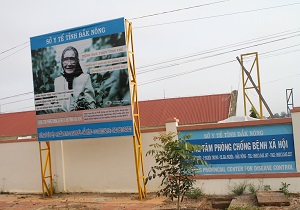
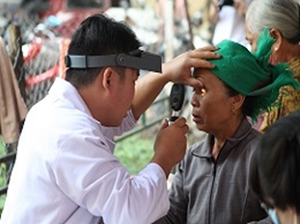
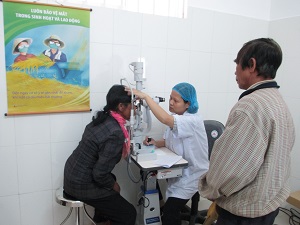
The third part, to improve service accessibility, has included the organisation of outreach and hospital-based campaigns. The provincial eye care team in Dak Nong or district eye care staff in Lam Dong went across communes in the provinces to provide screening and basic eye treatment to local people. Normally, the eye care team would spend a month in the community to conduct these screening campaigns. Patients needing surgery were referred to the district hospital or provincial eye units for surgery without a long wait. To date, Lam Dong and Dak Nong eye staff have screened 23,047 people in the community and 17,751 people in provincial and district eye units.
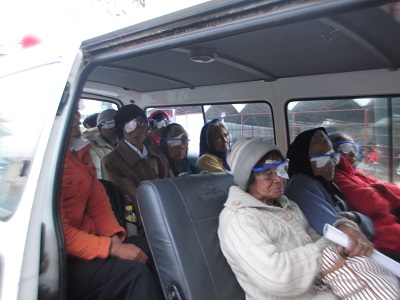
Finally, ensuring the quality of eye services is not forgotten. Besides ensuring the required clinical standards of eye surgery, patients were given post-operation reminder phone calls return to the eye units for rechecking and district eye units have also taken on to follow-up with patients.
With the above efforts, Lam Dong and Dak Nong provinces have achieved to date what the project has set out to do. Furthermore, the eye care staff in these provinces are making a good impression and leaving a positive image of conscientiousness and dedication with their patients. It is the true to say that the support from SCB through Seeing is Believing has created a bright future for healthy eyes and blindness prevention in Dak Nong and Lam Dong.

Project Manager,
The Fred Hollows Foundation – Viet Nam
[email protected]